Andrew Graham is a third-generation farmer and owner of Mid Tartraven Farm in Bathgate. He’s based his successful venture on a fleet of three Valtra tractors purchased over the years from Brian Hamilton, Sales Manager at R&R Machinery in Lanark.
Andrew Graham has dedicated his life to working with Angus and Hereford cattle on his upland farm in West Lothian. All the cows are born on the farm, and taken all the way to the finished product, fattening them from the age of seventeen months to twenty-one months – until they are sold to a meat processor based in Ayrshire, who supplies major wholesaler Costco.
For him, farming is not only a business, it’s a lifestyle. That’s what he was brought up to do, and he keeps doing it because he loves working with the animals.
”Yes, you’ve got to make profit, but I think farming is not just about making profit if you were purely out to become a millionaire, I think you would choose another profession.”
In the past, he’s dabbled in continental cows, but he finds the traditional breeds easier to work with, as they have a nice nature. He crosses Simmental cows with Angus and Herefords to get “hybrid vigour”.
It’s a closed herd of 110 cows and 5 bulls, which means he breeds their own replacements by doing so, the risk of disease is minimised, and it’s very easy to keep traceability in check.
The cows are kept outside from the third week in April, until the middle of October. To produce natural marble in the meat, and the best eating quality, the animals are on a grass-based diet, a mix of dry silage and haylage. On the farm, Andrew grows about 80 acres of barley a year. He’s put fifty acres in pit silage and complements it with 800 to 1,000 bales of haylage.
Andrew Graham, with his fleet of Valtra tractors.
His operation relies heavily on his three Valtra tractors – a N103, a N113 and a G125 which get used for just about everything on the farm: all the grass work, from mowing to tedding to baling, and on the grain side, subsoiling, ploughing, sewing. When he bought his first one, almost ten years ago, manoeuvrability was the main decision factor – he was looking for a tractor that was strong, but not too big, able to get in and out of the buildings with ease.
He was dazzled by the power to weight ratio of the N103, and found it so economical that he bought the other ones on the back of it.
”The Sisu engines have a very good reputation, they ’re ones of the best engines in the market.”
He’s adamant that it is one of the best 3-cylinders that was ever made, and he’s grown so attached to it that he swears he’ll never sell it. It now gets used for ploughing with a straight-forward reversible plough.
The second one he got was the N113, in 2015. It gets used for either muck spreading on the one pass, and occasionally as a second backup loader tractor.
“It’s able to do the work of a 6-cylinder and it burns a fraction of the fuel bills.”
In 2020, he bought the G125, which basically does all the loader work -its used to feed the cattle, every single day, and it’ll handle about 1,400 bales of straw a year, and 1,000 bales of silage.
“It’s a very good loader tractor, and once you get used to the joystick control at the side of the seat, you’ll never go back again – it’s effortless to use.”
Before this one, he actually owned an A Series, which was lighter in bulk, but lacked a bit of power – he felt that there was a gap in the Valtra range, which they filled in with the G series.
Andrew’s three Valtra tractors: from left to right, N113, N103 and G125.
“We’re really happy with it, it’s got adequate power, still quite nimble plus you do notice the difference with the first one when you’ve got front suspension, and you’re sitting in it all day, it’s very comfortable.”
Thanks to backup service from R&R Machinery in Lanark (part of the Hamilton Ross Group), he’s been able to sustain his business without a glitch.
“The animals need looking after all year round, so you need something that’s reliable if you do hit a problem, you need backup that you can keep your operation going.”
Optimistic about the future of farming, he’s convinced that there is a place for agriculture to work hand in hand with environmental issues, and he’s very impressed to see females coming into the next generation.
“You think you own a farm, but you’re only the custodian of that farm it will be there long after you’re gone, so you’re basically a land manager, looking after the land.”
He’s very aware that farmers are going to have to focus on the quality of the products that they produce, and entice customers to support local businesses in Scotland.
Andrew’s calves in the shed for winter.
